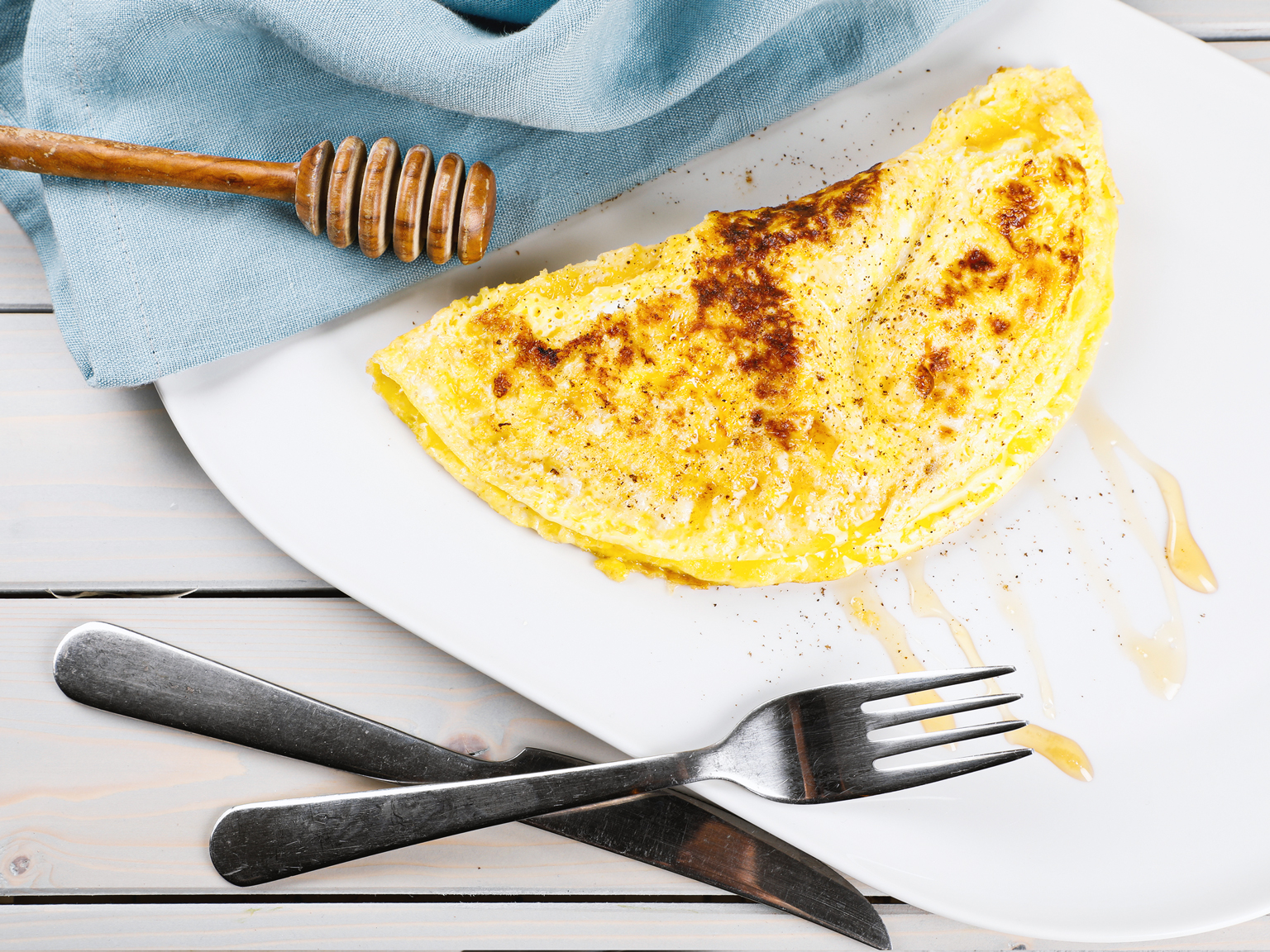Let’s start ab ovo. An egg is an organic vessel with a flexible or hard shell in which an embryo develops. Mammals, reptiles, amphibians, fish, birds, chocolate bunnies – all of them lay eggs. But many of us think solely of chickens when ‘egg’ is pronounced. Probably because a chicken egg is the most commonly consumed type of egg in the world. It’s so great that our distant ancestors once decided to domesticate chickens’ forefathers (or is it foreroosters?) some ten thousand years ago. Eggs are delicious and nutrient dense. They are a great source of protein and lipids. When people discovered how versatile eggs were, they started to consume them more often.
And of course for breakfast. Romans, for instance, would prepare ova spongia ex lacte or eggs with milk. Nothing peculiar from the first glance – a regular omelette. But this dish is served with honey. The rest is simple: beat 2 eggs with 125 ml / ½ cup of milk and 1 tsp of olive oil. Then toss some butter into a pan and heat until you hear sizzling. Pour in the egg mixture and start whisking everything with a spatula or with a fork until the omelette begins to solidify. Turn one side onto itself to create a roll. Warm 1 Tbsp of honey and drizzle over the omelette. Sprinkle it with salt and pepper. Serve immediately and enjoy your meal. Feel free to omit the next step, but Romans would also crush the eggshells in their plates to protect themselves from evil spirits that could possibly hide in the dish.
Speaking of evil, from Medieval European cookery texts we know a recipe for a special appetizer – deviled eggs (somebody also calls them Russian eggs or simply stuffed/dressed eggs). There are plenty of recipes out there but we are interested in the older ones, straight from the Middle Ages.
You will need to hard-boil and peel 8 eggs and cut them in half. Scoop out the yolks and mix them well with one raw egg, 60 g / ¼ cup of mozzarella cheese, 1 tsp of parsley, a pinch of salt, and a pinch of saffron. Place the mixture back into egg halves, put them back together, and bake in a pan at 180°C /350°F about 20 minutes. Sprinkle with sugar and serve.
As you may see, people of the past loved their eggs sweet. Today most Europeans prefer our egg concoctions on the savoury side (baking is not taking into consideration here), but sweet omelettes are still a big thing. Just give them a try at least once. It will work, especially if combined with some crunchy and floral at the same time. Take 2 eggs and combine them with 2 Tbsp of yoghurt and 1 Tbsp of sugar. Mix well. Fry like a regular omelette in a buttered pan, fold it in half. Plate, drizzle with honey, serve with an extra dollop of yoghurt, some granola and berries of your choice. It may indeed sound strange but this is a great way to make some real connections with our past.











What do you think?